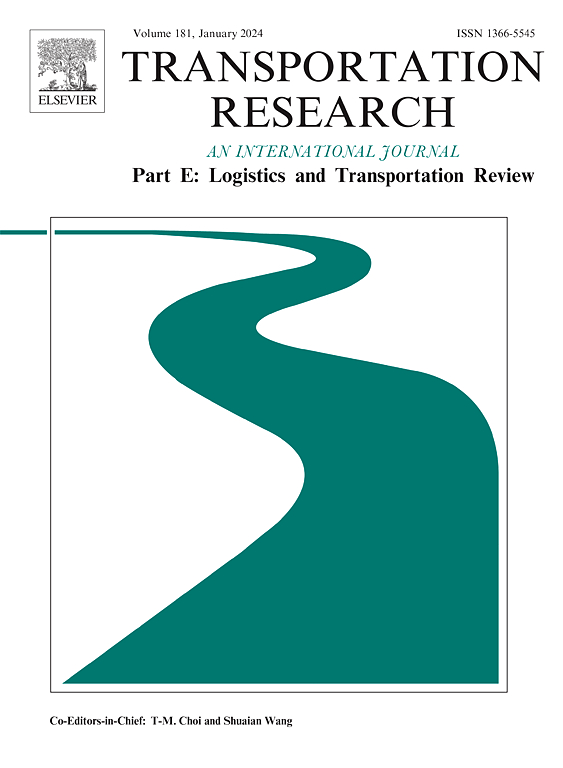为救灾行动设计综合救援物资采购和最后一英里分配策略
IF 8.3
1区 工程技术
Q1 ECONOMICS
Transportation Research Part E-Logistics and Transportation Review
Pub Date : 2025-05-22
DOI:10.1016/j.tre.2025.104183
引用次数: 0
摘要
虽然联合国人道主义应急仓库等大型人道主义组织在准备阶段将救济物品预先放在战略中心,但许多地方人道主义组织只有在应急阶段评估受益者的需求后才采购救济用品。由于道路基础设施中断、协调问题和援助分配不公平,这往往导致采购和最后一英里分配方面的挑战,导致救济物资严重短缺,最终加剧了受益者的苦难。本文通过提出有效采购和灾害应对行动中最后一英里公平分配的综合框架来解决这些差距。在实践的驱动下,我们分析了考虑受益人剥夺成本的回购和期权合同,以协调不同道路条件下HO和供应商之间的采购过程。随后,我们开发了一个多时期的最后一英里救济分配模型,该模型弥合了组织与受益人之间的差距,并考虑了社会成本、车队容量和不确定需求。综合分析框架旨在提供采购和最后一英里分配的顺序图,加强人道主义后勤的三个关键指标:效率、效力和公平。对阿萨姆邦洪水的案例研究验证了该框架的有效性,证明了其通过解决现实场景中的采购和最后一英里分配挑战来改善灾害响应结果的潜力。最后,本研究为从事灾害应对行动的人道主义从业人员提供了一些管理启示。本文章由计算机程序翻译,如有差异,请以英文原文为准。
Designing integrated relief aid procurement and last-mile distribution strategies for disaster response operations
While large humanitarian organizations (HOs) such as the United Nations Humanitarian Response Depot preposition relief items at strategic hubs during the preparedness phase, many local HOs procure relief supplies only after assessing beneficiaries’ needs in the response phase. This often leads to procurement and last-mile distribution challenges due to disrupted road infrastructure, coordination issues, and inequitable aid distribution, resulting in severe shortages of relief supplies and ultimately aggravating the beneficiaries suffering. This paper addresses these gaps by proposing an integrated framework for effective procurement and equitable last-mile distribution in disaster response operations. Driven by practice, we analyse buyback and options contracts accounting for the beneficiary’s deprivation cost to coordinate the procurement process between the HO and the supplier under varying road conditions. Subsequently, we develop a multi-period last-mile relief distribution model that bridges the gap between the HO and the beneficiaries and accounts for social costs, fleet capacity, and uncertain demand. The integrated analytical framework aims to provide a sequential map of the procurement and last-mile distribution, enhancing the three critical metrics of humanitarian logistics: efficiency, effectiveness and equity. A case study of the Assam Floods validates the framework, demonstrating its potential to improve disaster response outcomes by addressing procurement and last-mile distribution challenges in real-world scenarios. Lastly, this study offers several managerial implications for humanitarian practitioners working in disaster response operations.
求助全文
通过发布文献求助,成功后即可免费获取论文全文。
去求助
来源期刊
CiteScore
16.20
自引率
16.00%
发文量
285
审稿时长
62 days
期刊介绍:
Transportation Research Part E: Logistics and Transportation Review is a reputable journal that publishes high-quality articles covering a wide range of topics in the field of logistics and transportation research. The journal welcomes submissions on various subjects, including transport economics, transport infrastructure and investment appraisal, evaluation of public policies related to transportation, empirical and analytical studies of logistics management practices and performance, logistics and operations models, and logistics and supply chain management.
Part E aims to provide informative and well-researched articles that contribute to the understanding and advancement of the field. The content of the journal is complementary to other prestigious journals in transportation research, such as Transportation Research Part A: Policy and Practice, Part B: Methodological, Part C: Emerging Technologies, Part D: Transport and Environment, and Part F: Traffic Psychology and Behaviour. Together, these journals form a comprehensive and cohesive reference for current research in transportation science.

 求助内容:
求助内容: 应助结果提醒方式:
应助结果提醒方式:


